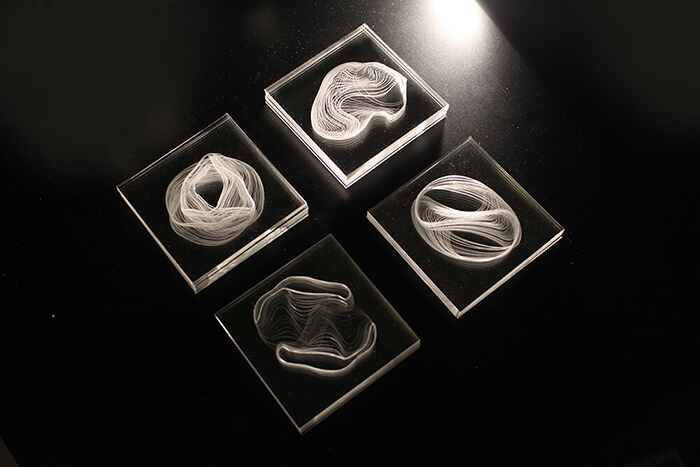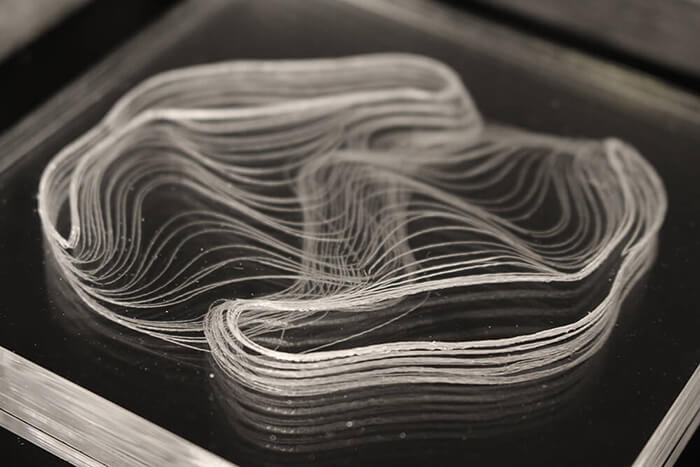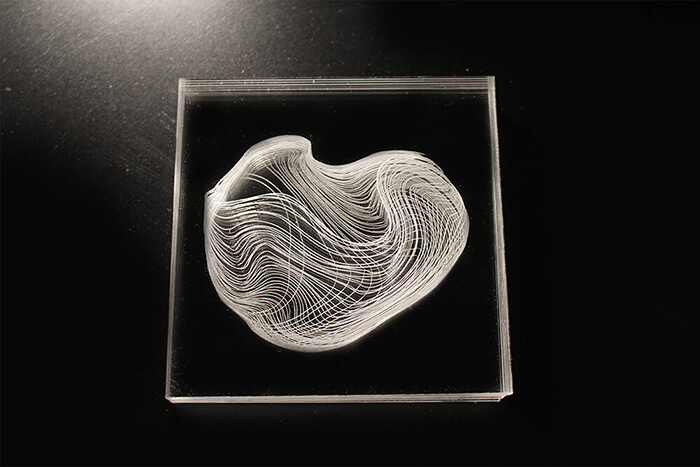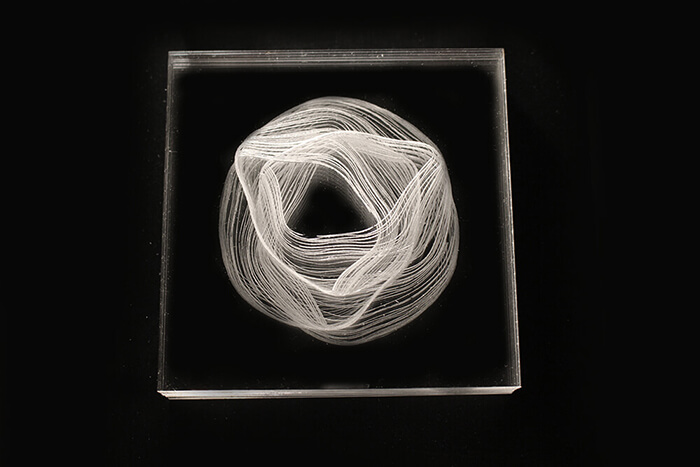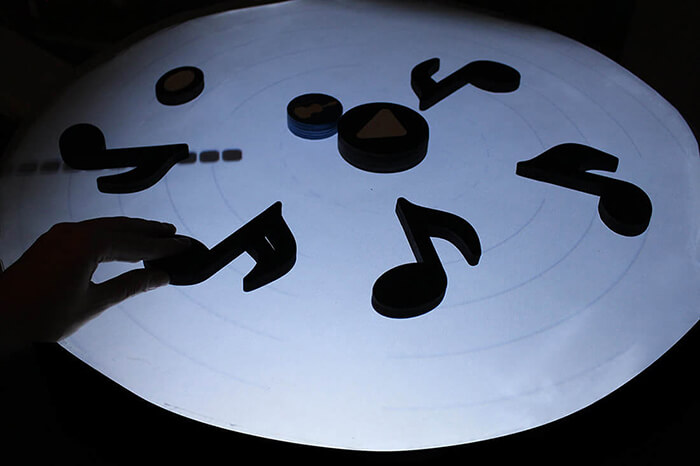Hello!
Hi there, my name is Saskia. Welcome to my documentation website for Fabricademy.
New media and interaction design has been my interest for several years already. I have earned Bachelor of Arts and Master of Arts degrees from the Academy of Fine Arts in Katowice, Poland. In 2015—2016 academic year I did an Erasmus+ exchange studies at Aalto University, Finland in the New Media Design and Production programme, where I have been introduced to digital fabrication and rapid prototyping. It proved to be life changing in for me - after completing my exchange year, I de- cided to go further and applied for an internship at RUC Fab Lab in Roskilde, Denmark. Later I started work at Fab Lab Berlin, where I could learn the technical and practical side of digital fabrication.

Fabricademy
I focused mainly other people’s projects and ideas, as well as basic machine use training. For now, I would like to move away from the basic projects intended as simple technical exercises, towards actual, more complex projects based on solid concept or research, incorporating the skills I already have and learn new ones accordingly - channelling them towards the wearable technologies.
Interests
Physical interfaces & embodiment
My main field of interest is digital fabrication and interaction design with focus on physical interfaces and embodied interaction. I would like to further work on the intersection between the digital and physical world, to take the best advantage of both worlds. Wearable technologies are the ultimate kind of physical interfaces, with very unique characteristics, that offer equally unique fully embodied interaction features. I believe those are very interesting fields of exploration for design and artistic purposes but could also provide valuable material for academic research.
I made a separate dedicated to this matter (work in progress): Please see here
2D < 2.5 < 3D < 4D

Being a graphic designer, I’m more comfortable with 2D and 2.D forms. I'm working more on developing my spatial imagination, but still often resort to optical illusions or 2.5 layering or folding. I found textiles to be fairly interesting in a way they they start as flat surfaces due to their production methods and then transform into 3D forms according to design. Many techniques and effects used with paper are also possible to achieve with fabrics.
Lines, curves etc.
The graphic form has a significant impact on the reception of any image. Hence its
selection is one of the key decisions in any visual design.
A line is the simplest, the most basic graphic element, at the same time it provides the most diverse effects, depending on the type and thickness of the tool, the dynamics of movement, the degree of complexity, drawing directions. Paul Klee explored this
phenomenon in his "Pedagogical Sketchbook". These considerations were summarised as follows:
I:
Line as point progression
Line as planar definition
Line as mathematical proportion
Line as coordinator for the path of motion
II:
Line as optical guide
Line as optical reason
Line as psychological balance
III:
Line as energy projection
IV:
Line as symbol of centrifugal and centripedal movement
Line as symbol of will and infinity
Line as symbol of color mutations and kinetic harmony
Sibyl Moholy-Nagy,
podsumowanie w „Pedagogical Sketchbook” Paula Klee
Punkt i linia a płaszczyzna. przyczynek do analizu elementów malarskich
- Wasyl Kandyński. - Warszawa: Państwowy Instytut Wydawniczy, 1986.
So many possibilities are given by an inconspicuous set of points. It is not without a reason, that children begin their drawing learning with contours. Many schemes and instructions take a linear form. Even handwriting is composed of lines. They may be drawn with almost any tool from a pen to a stick in the sand. Many artists take pride in a recognizable lineart style or their own 'line'.
Lines are everywhere and they may depict everything. They are the most intuitive way of representing reality through drawing. A line on a plane is two-dimensional, does not reflect depth, at least seemingly. Simplification in a linear drawing, that cannot realistically render three-dimensional objects, makes it schematic by definition. However, this does not mean that the contour cannot be used to convey the spatial properties. This is a matter of interpretation rather than perception of any object in sight.
Many phenomena are represented precisely by lines: graphs of square functions, falls and increases in stock market prices, atomic bonds, even notes are displayed on a five lines. I was particularly interested in the graph showing sound levels, popular in all programs that play music, the linear equalizer. Sound is wave-like in nature, and most physical phenomena of this nature are represented in schemes and diagrams using lines. So even the most complex and virtuosic musical compositions, could be possible to depict not using notes, as it was accepted and practiced for centuries, but using a curve. Here again, the reduction to the simplest element - the basic sound wave, represented by a line, appears.
Similar process may be applied to many other three dimensional objects - deconstruction, reduction to the simplest element, the essence. Properly juxtaposed, multiplied, deformed, shifted and rotated builds a more and more complex form. However, even complex structures retain a minimalist and clear character.
Previous work
>Microorganisms
LASERCUT SCULPTURAL OBJECTS, ANIMATION, SILKSCREEN PRINTS
The project is based on features of transparency and reflection of light on transparent surfaces. The main theme are microorganism, bacteria and
viruses shown with subtle and ethereal lines. In an aesthetically pleasing
manner it portrays lethal forms. Their beauty observed like under a microscope suggests reflection on the charm of what is dangerous. There is also a motif of evolution as some forms are shown in phases of decay and deformation. Started as a course assignment in Silkscreen class at Academy of Fine Arts in Katowice, further developed in the Ways of Making course at Aalto Fablab.
>Notes from notes
Graduation project at Academy of Fine Arts in Katowice - and interactive installation with physical interface. It incorporates an interactive table display with music notes, AR markers and computer vision. This work was intended as an exploration of design possibilities given by physical interfaces. I chose the music theme since music notation is an international standard way of transcripting music, creating specific language of musicians. It has spatial and time dimensions that can be visualised in 2d way using position of objects and object types. It may be created interactively, with live result immediately available as sound, inviting to play around one or more people. Repetitive cycle in melody provides opportunity to hear differences, when changes were made on the table. The installation was fairly successful with children, who not only could make their own melodies, but also could learn basics of music notation in a fun and engaging way, encouraging creativity as well as social interaction.
Back
